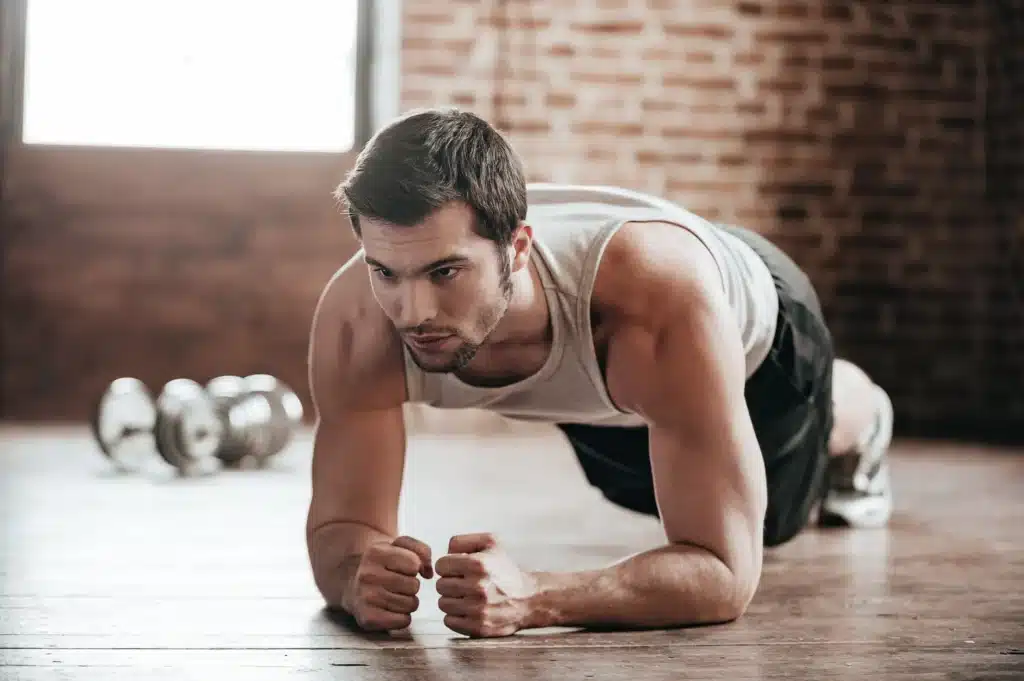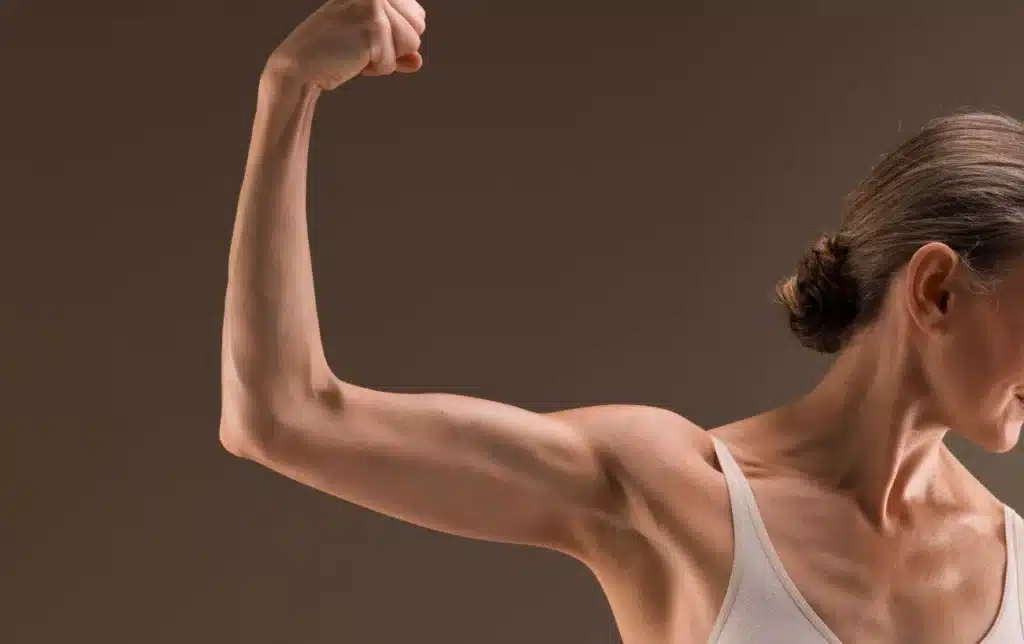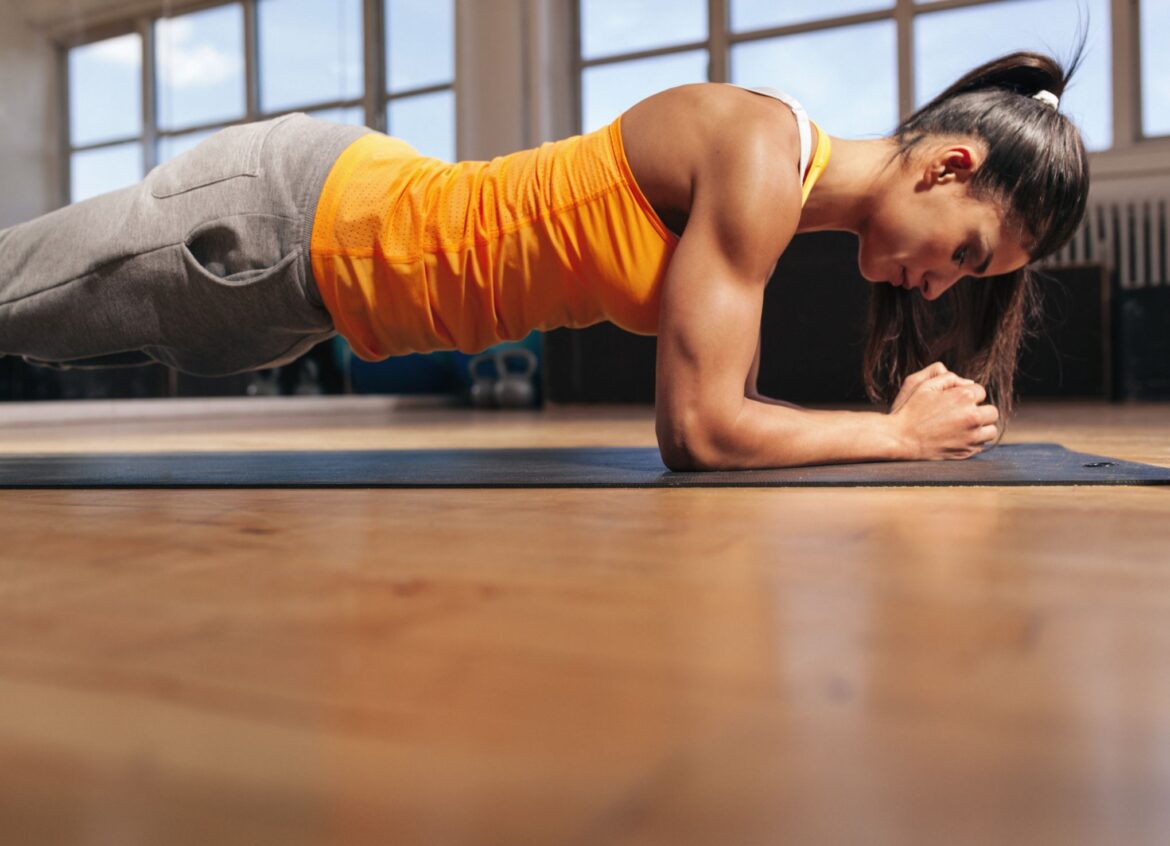Introduction
Does Pilates Build Muscle: Pilates is a widely practiced form of exercise known for its focus on core strength, flexibility, and overall body conditioning. While it has gained immense popularity for its ability to improve posture and enhance core stability, a common question that often arises is whether Pilates can effectively build muscle. In this exploration, we will delve into the mechanisms behind Pilates and its impact on muscle development, examining its potential to sculpt and strengthen the body. Whether you’re a dedicated Pilates enthusiast or someone considering incorporating it into your fitness routine, understanding the relationship between Pilates and muscle building is crucial for achieving your fitness goals.
Pilates, developed by Joseph Pilates in the early 20th century, is a low-impact exercise system that primarily focuses on strengthening the core muscles, including the muscles of the abdomen, lower back, and pelvic floor. It involves controlled movements, breath control, and an emphasis on proper alignment and body awareness. Pilates can be performed on specialized equipment such as the reformer or using a mat.
While Pilates often emphasizes core strength, it is not limited to it. Many Pilates exercises target various muscle groups, including the legs, arms, and back. By engaging multiple muscle groups in a single movement, Pilates can provide a comprehensive full-body workout. Like any exercise program, consistent practice and progression are key to achieving muscle-building results with Pilates. Over time, individuals can increase the intensity and complexity of their Pilates routines to continue challenging their muscles.

Can you gain muscle in Pilates?
Physical benefits: The physical benefits of Pilates include an increase in muscle strength and tone without creating bulk. You can expect to see an increase in deep core muscle strength, which helps keep your abdominal muscles tight and toned.
The Role of Resistance
One of the factors that determine whether muscle gain occurs in Pilates is resistance. Traditional Pilates exercises primarily use the individual’s body weight as resistance. While this can improve muscle endurance and tone, it may not provide the same muscle-building potential as lifting heavy weights in conventional strength training programs. However, Pilates can be adapted to include additional resistance using specialized equipment like the reformer, resistance bands, or weighted balls. Incorporating resistance into Pilates exercises challenges the muscles further and can lead to muscle hypertrophy, especially when combined with progressive overload.
Variety of Pilates Exercises
Pilates offers a diverse range of exercises that target different muscle groups. While core muscles are a primary focus, there are exercises that engage the legs, glutes, and upper body as well. For instance, leg circles, bridges, and the hundreds engage the lower body, while exercises like the chest press and shoulder bridge involve the upper body. By incorporating a variety of Pilates exercises into a routine, individuals can stimulate muscle development throughout their body.
Functional Strength
Pilates is renowned for promoting functional strength – the kind of strength that improves posture, enhances body stability, and aids in the performance of daily activities. This functional approach to strength is not solely about muscle size but rather about the effectiveness of the muscles in functional movements. Pilates can contribute significantly to functional strength, making it an ideal choice for individuals looking to build muscles that serve practical purposes beyond aesthetics.
How long does it take to build muscle with Pilates?
Depending on the frequency and intensity of your Pilates workout, you can expect to see results fast. Joseph Pilates famously stated; “In 10 sessions you will feel a difference, in 20 sessions you will see a difference, in 30 sessions you will have a whole new body,” – Joseph Pilates.
Individual Factors
Everyone’s body responds differently to exercise, and genetics play a crucial role in how quickly you can build muscle. Some individuals have a genetic predisposition to gain muscle mass more easily, while others may need more time and effort to see significant changes. Additionally, age can affect muscle-building capabilities, with younger individuals typically experiencing faster results.
Starting Point
Your initial fitness level and body composition also impact how long it takes to build muscle with Pilates. If you’re a beginner with relatively low muscle mass and strength, you may notice improvements sooner than someone who is already well-trained and has higher muscle development.
Frequency and Consistency
The frequency and consistency of your Pilates practice are essential factors. Regular, consistent practice is key to building muscle. Aim for at least 3 to 5 Pilates sessions per week to see noticeable progress. Keep in mind that adherence to your routine is crucial, so it’s better to practice consistently at a lower intensity than sporadically at a high intensity.
Intensity and Progression
The intensity of your Pilates sessions also matters. Pilates can be adjusted to provide varying levels of resistance and challenge. Incorporating advanced movements, using resistance bands or specialized equipment like the reformer, and gradually increasing the difficulty of exercises are all ways to intensify your Pilates routine and accelerate muscle growth.
Does Pilates build muscle like lifting weights?
Pilates is not as effective for muscle hypertrophy, but is amazing for building core strength, and strength in the end range of movements, which helps to prevent against injuries.
Pilates: The Focus on Functional Strength and Lean Muscles
Muscle Endurance: Pilates exercises often involve holding positions and performing controlled, repetitive movements. This builds muscle endurance, allowing your muscles to work efficiently for longer durations.
Toning and Definition: Pilates is excellent for sculpting and toning muscles, creating lean and well-defined physiques. It helps shape the body, promoting long, streamlined muscles.
Core Strength: Pilates is renowned for strengthening the core muscles, including the deep stabilizing muscles of the abdomen and back. A strong core enhances overall body stability and posture.
Whole-Body Engagement: While core strength is a primary focus, Pilates engages various muscle groups throughout the body. Many exercises involve the legs, arms, and back, providing a comprehensive full-body workout.
Functional Strength: Pilates promotes functional strength, which means building muscles that are practical and useful for everyday activities. This type of strength can improve posture, reduce the risk of injury, and enhance overall body functionality.
Does Pilates burn fat or build muscle?
Pilates and weight loss
Improving body composition through consistent muscle strengthening techniques can help build lean muscle and reduce body fat, also often resulting in weight loss. This is something that Pilates can facilitate through its core movements and philosophy of mindfulness between a person and their body.
Caloric Expenditure: Like any physical activity, Pilates burns calories. The number of calories burned during a Pilates session depends on various factors, including the intensity of the exercises and your body weight. While Pilates may not burn as many calories as high-intensity cardiovascular workouts like running or cycling, it can still contribute to calorie expenditure, which is essential for fat loss.
Improved Metabolism: Pilates can help boost your metabolism, which plays a role in fat burning. Regular Pilates practice increases lean muscle mass, and muscle tissue requires more energy (calories) at rest compared to fat tissue. This means that as you build lean muscle through Pilates, your body becomes more efficient at burning calories even when you’re not exercising.
Core Engagement: Pilates exercises often engage the core muscles, leading to improved posture and abdominal strength. A strong core can enhance your ability to perform other forms of exercise and may indirectly contribute to fat loss by enabling you to engage in more intense workouts.
Stress Reduction: Pilates incorporates mindful breathing and relaxation techniques, which can help reduce stress levels. Lower stress can aid in weight management because elevated stress hormones like cortisol are associated with increased abdominal fat.
Is Pilates better than gym for muscle?
Pilates builds strength and flexibility through controlled movements targeting specific muscle groups. This creates a toned and elongated appearance. In contrast, Gym workouts often focus on building larger muscle groups through heavy lifting and high-intensity cardio training.
Pilates: The Focus on Functional Strength
Pros
Core Strength: Pilates places a strong emphasis on strengthening the core muscles, including the transverse abdominis, obliques, and muscles of the lower back. This can improve posture and support overall body stability.
Muscle Endurance: Pilates exercises often involve holding positions and performing controlled, repetitive movements. This builds muscle endurance, allowing muscles to work efficiently for longer durations.
Toning and Definition: Pilates is excellent for sculpting and toning muscles, creating lean and well-defined physiques. It helps shape the body, promoting long, streamlined muscles.
Whole-Body Engagement: While core strength is a primary focus, Pilates engages various muscle groups throughout the body. Many exercises involve the legs, arms, and back, providing a comprehensive full-body workout.
Cons
Muscle Hypertrophy: Pilates may not lead to substantial muscle hypertrophy (growth) like traditional weightlifting or resistance training. If significant muscle mass gain is your primary goal, Pilates may not be the most efficient method.
Limited Resistance: While Pilates can incorporate resistance through specialized equipment like the reformer or resistance bands, it often relies on body weight as resistance, which may not provide the same muscle-building potential as lifting heavy weights.
Is Pilates enough of a workout?
Is Pilates Enough of a Workout? Pilates is enough of a workout for one session; however, it’s important to vary your workouts based on your goals throughout your fitness journey. This means performing different styles of workouts that compliment your fitness goals.
Core Strength: Pilates is renowned for strengthening the core muscles, including the transverse abdominis, obliques, and muscles of the lower back. This leads to improved posture, better body stability, and enhanced core strength.
Functional Strength: Pilates promotes functional strength, which means building muscles that are practical and useful for everyday activities. This type of strength can improve daily life and overall functionality.
Flexibility: Pilates exercises incorporate stretches and movements that enhance flexibility and joint mobility. Improved flexibility can reduce the risk of injury and support better overall movement.
Muscle Endurance: Pilates exercises often involve holding positions and performing controlled, repetitive movements. This builds muscle endurance, allowing muscles to work efficiently for longer durations.
Mind-Body Connection: Pilates encourages a strong mind-body connection, fostering body awareness and mindfulness. This can improve coordination, balance, and overall well-being.
How Pilates changed my body?
‘Pilates focusses on lengthening and expanding the muscles, instead of bunching them up. This therefore allows them to become longer and leaner,’ says Mahal. ‘You will feel taller and will become longer and leaner. The exercises within Pilates are dynamic stretches, which mean they are active movements.
Improved Core Strength
One of the most significant changes I noticed after incorporating Pilates into my fitness routine was a substantial improvement in core strength. Pilates places a strong emphasis on the deep core muscles, including the transverse abdominis and obliques. These muscles are essential for maintaining good posture and providing stability to the spine and pelvis.
As I progressed in my Pilates practice, I began to feel a sense of strength and stability in my core that I hadn’t experienced with other forms of exercise. This newfound core strength had a ripple effect on my overall body alignment, reducing discomfort in my lower back and improving my posture in everyday activities.
Enhanced Flexibility and Joint Mobility
Pilates incorporates a range of dynamic stretches and movements that promote flexibility and joint mobility. Over time, my body became more supple, and I noticed increased range of motion in my joints. Everyday activities like bending, reaching, and twisting became easier, and I felt less prone to stiffness or discomfort.
The focus on controlled movements in Pilates allowed me to stretch and lengthen my muscles gradually, reducing the risk of injury that can come with sudden, uncontrolled stretching. This aspect of Pilates made it an ideal practice for me to maintain overall flexibility and joint health.
Muscle Tone and Definition
While Pilates may not be a primary muscle-building workout like weightlifting, it significantly improved muscle tone and definition in my body. Pilates exercises involve engaging various muscle groups, resulting in lean and well-defined muscles. My legs, arms, and core became more toned, and I experienced a sense of overall body conditioning that left me feeling strong and confident.
The development of long, lean muscles through Pilates was particularly appealing to me, as it complemented my desire for a fit and sculpted physique without excessive bulk.
Why am I not seeing results from Pilates?
One of the main reasons you may not be feeling or seeing the results of your Pilates workouts is your consistency, or lack thereof. While you may be getting some benefits from yo-yoing from 5 classes one week, to a two week break, you’ll find far greater results from building a solid foundation from the get go.
Inadequate Frequency and Consistency
Issue: To see significant results from Pilates, consistency is key. Infrequent practice or sporadic workouts may not provide the cumulative benefits of regular training.
Solution: Commit to a consistent Pilates schedule. Aim for at least 3 to 5 sessions per week to experience noticeable progress. Set aside specific times for your Pilates practice and prioritize it as you would any other fitness activity.
Unbalanced Approach to Fitness
Issue: Depending solely on Pilates for all your fitness needs may not address all aspects of physical fitness. If you’re seeking specific goals like cardiovascular fitness, muscle hypertrophy, or weight loss, Pilates alone may not be sufficient.
Solution: Consider incorporating other forms of exercise into your routine to complement your Pilates practice. Incorporating cardiovascular activities like running, swimming, or cycling, as well as strength training or resistance workouts, can help you achieve a well-rounded fitness regimen tailored to your goals.
Poor Nutrition and Recovery
Issue: Proper nutrition and recovery are crucial for muscle development and overall fitness progress. Inadequate nutrition and rest can hinder your body’s ability to repair and grow muscle.
Solution: Ensure you’re consuming a balanced diet that supports your fitness goals, including sufficient protein to aid in muscle repair. Get enough rest and sleep to allow your body to recover and adapt to your workouts. Hydration is also essential for muscle function and overall well-being.

Conclusion
The question of whether Pilates builds muscle has a nuanced answer. Pilates, with its emphasis on core strength, muscle endurance, and proper body alignment, can indeed contribute to muscle development. It is particularly effective at sculpting and toning the body, creating lean and well-defined muscles. However, its muscle-building potential, in terms of sheer size and bulk, may be limited compared to traditional strength training programs that use heavier weights and higher resistance.
Pilates is an excellent choice for individuals seeking a holistic approach to fitness, improved core strength, flexibility, and overall body conditioning. It complements other forms of exercise and can be adapted to incorporate additional resistance for those looking to increase muscle-building potential. Ultimately, the effectiveness of Pilates in building muscle depends on individual goals, consistency in practice, and the integration of appropriate resistance and progression into the routine. Whether one’s aim is to sculpt, tone, or enhance functional strength, Pilates remains a valuable tool in the pursuit of a balanced and healthy physique.
In summary, Pilates can indeed build muscle, especially when approached with intention, consistency, and a focus on progressive resistance. While it may not be the primary choice for individuals seeking significant muscle mass gains or bodybuilder-level hypertrophy, Pilates offers a holistic approach to fitness that promotes muscle endurance, tone, and functional strength throughout the body. As with any fitness regimen, the effectiveness of Pilates in building muscle is influenced by various factors, and it can be tailored to suit individual goals and preferences.

